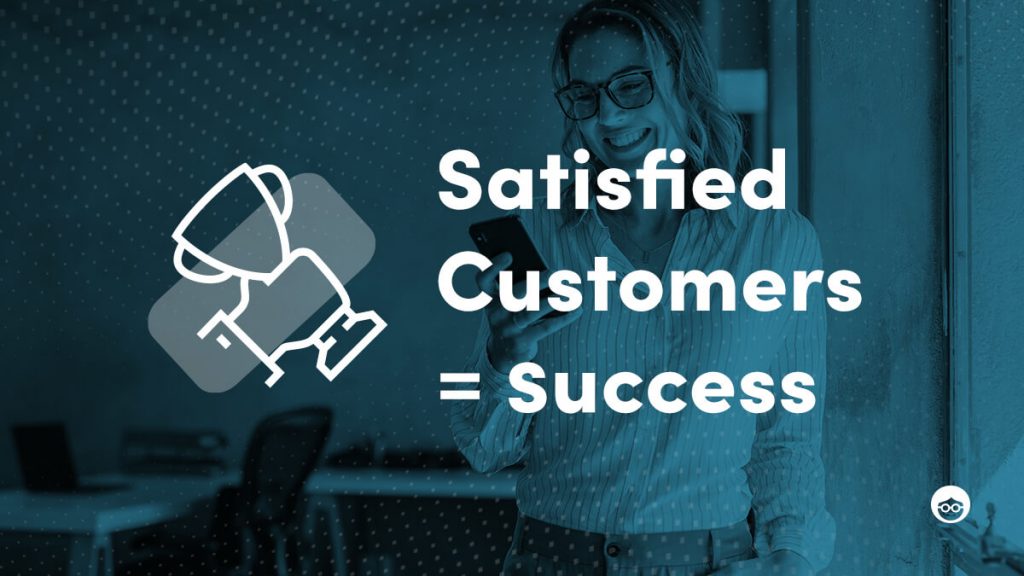Retention Marketing: 3 Tactics to Help You Succeed

If there’s one thing that everyone knows about customer retention, it’s this:
Acquiring a new customer is more expensive than retaining an existing one.
In fact, the longer a customer is retained, the more valuable they become to a business.
Why? Businesses have to invest a lot in capturing the attention of potential customers, and that’s before those customers even start spending! Later, when the customer is on board, the volume of their purchases goes up and generates more revenue, without that big burst of initial investment. So if a company can keep customers over the long term and boost retention rates by even 5% this can lead to increased profits of between 25% to 95%.
That’s why every company today should be focusing on customer retention. And if they aren’t already, then the time to start is right now.
But let’s go back to the beginning, and take a look at the concept of retention and what it means.
What is retention?
It’s simple, really: Retention is all the activities a business does to keep customers engaged, satisfied, and loyal.
Retention does not happen from one marketing campaign, or one sales offer.
Retention is about building positive customer relationships based on trust and loyalty, so it is an ongoing process. In order to be effective and get results, retention campaigns – like all marketing efforts – must be tracked, measured and optimized.
What metrics are used to measure retention?
There are several key metrics marketers typically use to gauge retention performance and strategize their next moves.
- Retention rate: This is the percentage of customers who started using the company’s products or/and services and continue to do so for a certain time period. Retention rate is the opposite of churn rate, which measures the percentage of customers a company has lost over the same time period. At Outbrain, for example, we measure retention by the percentage of customers still using our Amplify native advertising platform a set period of time after they initially signed up and began using it.
- Revenue retention rate: This is a monetary-based metric that compares the amount spent by a specific group of retained customers for two selected periods, for example, Q4 2020 and Q1 2021. To calculate the revenue retention rate, divide the amount spent in the later time period with the amount spent in the previous period, and multiply by 100 to achieve a percentage: (Q1 2021 / Q4 2020)*100. Naturally, the ideal revenue retention rate is over 100%.
- Feature adoption rate: This is the percentage of customers who use a particular feature or service in a set period of time, compared to the total number of customers in a given time period.
- Migration rate: This is a percentage of customers that are going through the various stages of the customer lifecycle. For example, at Outbrain, customers who were spending within a given timeframe, but then stopped spending for a specified length of time, are considered to have “migrated” from “active” to “churn” customer lifecycle. Monitoring migration rate is very important because it helps us know at what lifecycle stage customers are, and what we need to do to encourage them to climb the ladder and become more engaged and satisfied.
How to do retention marketing the right way
In retail e-commerce, retention activities often revolve around the use of retargeting ads with discount offers or email campaigns reminding customers of items left in their cart.
As a SaaS provider, what we offer customers is the use of our advertising platform. Our goal is for customers to advertise on our platform on a regular basis and be actively engaged and satisfied with the results. So we can’t just rely on notification emails or discount coupons. When it comes to retention, we need to think outside the box, and that means developing a cross-channel content strategy to connect with customers in different ways and at different times along the customer journey with us.
Here are the three tactics we like to use in our retention activities:
1. Emails:
Emails are a great tool for retention marketing as they have such high engagement rates and ROI. Plus you can be incredibly creative with email content and personalization, all in an automated, trackable way. At Outbrain, we send our customers all kinds of emails for different scenarios. Some of our emails are support-oriented, for example, offering customers troubleshooting tips for their campaigns. Other emails are educational in nature, such as introducing a new feature in the dashboard.
We also use automated emails that are triggered for customers who meet a certain criteria. For example, when a customer runs an Outbrain campaign, yet does not install the Outbrain conversion pixel, this initiates an email explaining to them the necessity of pixel installation, and providing a simple explanation of how to do it.
Running automated campaigns of course requires deployment of an email marketing system. We enjoy working with Optimove, a customer data platform that not only uses algorithmic optimization to run multichannel campaigns in an automated way but also gives deep analysis of the campaign’s performance.
2. In-App messaging:
At Outbrain, a huge part of keeping customers satisfied is making sure they have a smooth experience using our advertising platform. So we employ a range of real-time popups and messages inside the Outbrain Amplify dashboard.
When an Outbrain customer is working inside the dashboard to create and monitor campaigns, we employ automated and highly targeted popups to provide supportive messages and content at various moments. We do this with the help of Intercom, a platform that allows companies to communicate with customers inside software products (in our case, the Outbrain dashboard). For example, using Intercom messaging, we let customers know about an upcoming dashboard support webinar. Customers can click on the link to sign up for the webinar, from inside their own Outbrain dashboard interface.
Another way we communicate with customers inside the dashboard is with interactive guidance and support so they can become more proficient in the various features. We use software by WalkMe to create these “help” boxes, walkthroughs, and tool-tips that customers can interact with as they navigate the dashboard and learn how to use it.
3. Educational assets:
Another way we connect with existing customers is by providing educational materials and opportunities so they can get the most from the Outbrain platform. This includes webinars, video tutorials, a rich help center, and blog posts focusing on their pain points. For example, we recently republished a blog post with 10 tips for creating your first Outbrain campaign. As new and updated features are added to the Outbrain platform all the time, there are always topics that we can explore and content we can repurpose to keep customers engaged and informed about our product and offering.
By reaching customers with the right content via the right channel at the right time, we cultivate short and long-term relationships with customers that improve their experience with Outbrain and help us meet our retention KPIs.
Use Case: Webinars – Making the time to build customer relationships
Webinars are one of our favorite retention activities at Outbrain as they always bring good results. For example, we host a recurring monthly webinar for existing customers that takes them on a journey through the Outbrain Amplify Dashboard and shows them how to set up successful native campaigns.
Not only is the webinar educational, helping customers get familiar with the dashboard features, but it also creates an open conversation between Outbrain and our customers. Hosting a live webinar every month shows customers that we care about them, much more than just sending an email. The webinar demonstrates our willingness to make time to get to know our customers in the real world, meeting them where they are, and even answering their questions live. If they can’t make it to the webinar, we send them a recording afterward instead. In this way, we deliver content that is useful and enjoyable, and in a face-to-face format which is the best way to build real human relationships.
So that’s a wrap on Outbrain’s approach to retention marketing. We hope you enjoyed a glimpse into the efforts we make to keep customers satisfied and engaged.
And by the way, if you want to get started or are interested in learning how to navigate our dashboard and create successful campaigns, why not join the next Amplify 101 webinar? Hope to see you there!


